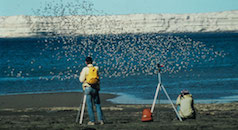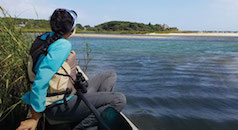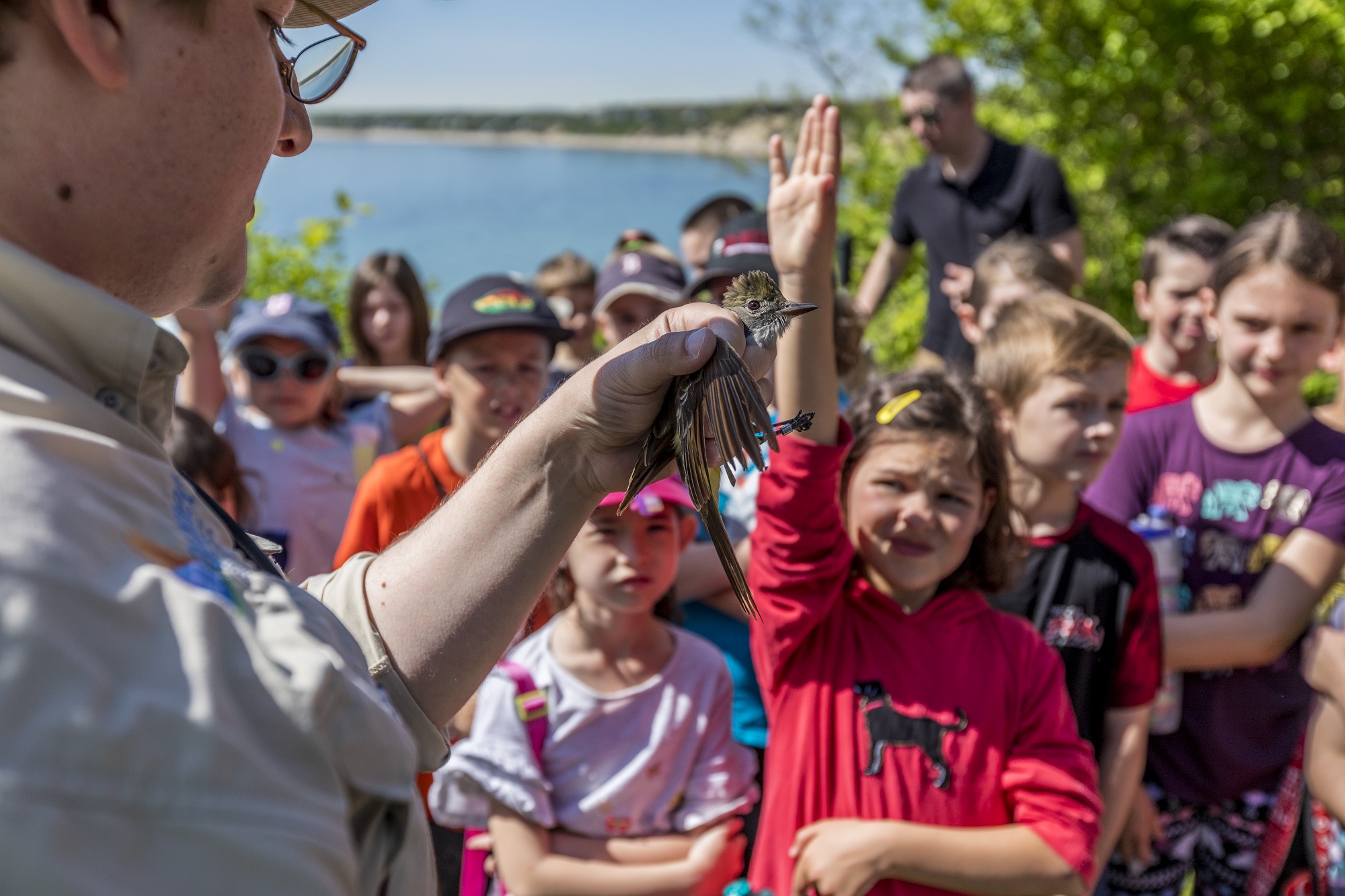Search Results

USA Today: Sandy’s Wake Leaves Shore Birds in Dire Straits
This article was originally published in USA Today on February 2, 2013. View the original article here. When red knots descend on the beaches of Delaware Bay this spring famished from their marathon flight toward the Canadian Arctic from the tip of South America, the rosy-breasted shorebirds may find slim pickings instead of the feast of horseshoe crab eggs they count on to fuel the rest of their migration. Superstorm Sandy scrubbed away almost all the sand the crabs need to spawn upon. Restoring it in time is a top priority of wildlife groups beginning to repair Sandy's massive damage to dunes, beaches and salt marshes along the Eastern Seaboard that support a diverse population of birds, fish, marine organisms...
Project Aims to Restore Downeast Maine Fisheries
On Wednesday, the New England Fishery Management Council tried to save a vanishing fish population by voting for a 77 percent reduction in the Gulf of Maine’s cod catch for the next three years. The decision follows long-running population declines for a variety of fish species in the northeastern United States, a region where cod was once so plentiful that an entire Cape was named after the fish. Cod landings in the Gulf of Maine have dropped by 90 percent over the past 150 years and virtually no cod have been caught in eastern Maine for more than 20 years, according to Anne Hayden, Manomet’s coordinator of the Downeast Fisheries Partnership (DFP). Last week, Hayden and Robin Alden, the executive...
The Register Citizen: Hurricane Sandy’s damage to Connecticut bird habitats studied
This article was originally published in The Register Citizen (CT) on January 27, 2013. It was written by Susan Misur. View the original article here. The Connecticut Audubon Society is planning to study how Hurricane Sandy's significant damage to shoreline nesting habitats will affect endangered birds, and whether it could benefit some of them. Its conservation staff assessed several areas -- Sandy Point and Morse Point in West Haven, Milford Point, Stratford's Long Beach, Harkness Memorial State Park in Waterford, and Bluff Point State Park in Groton -- and identified possible repairs to habitats. Staff members made before-and-after comparisons using data collected on water birds last summer as part of the Audubon Alliance for Coastal Waterbird Conservation initiative. The coastal...
Oystercatcher Recovery Project Shows Results
Ten years ago, the first-ever survey of the American Oystercatchers in the United States found only 11,000 birds and a population in decline. American Oystercatchers – large, colorful shorebirds that live in a narrow band of coastal habitat from Canada to South America – were not able to raise enough chicks because of pressure from predators, habitat loss and disturbance from human activities. Since then, the American Oystercatcher Working Group (led by Manomet’s Shiloh Schulte) and the National Fish and Wildlife Foundation (NFWF) developed and then implemented a recovery plan. Recent studies have shown that the plan is not just working, but is surpassing expectations. The recovery initiative now includes 25 partners in 17 states and...
Triple Pundit: Why We Must Harness Green Infrastructure—Not Concrete—To Secure Clean Water
This article was originally published in Triple Pundit on January 17, 2013. It was written by Todd Gartner. View the original article here. Natural ecosystems provide essential services for our communities. Forests and wetlands, for example, filter the water we drink, protect neighborhoods from floods and droughts, and shade aquatic habitat for fish populations. While nature provides this “green infrastructure,” water utilities and other decision-makers often attempt to replicate these services with concrete-and-steel “gray infrastructure”—usually at a much greater cost. Particularly where the equivalent natural ecosystems are degraded, we build filtration plants to clean water, reservoirs to regulate water flow, and mechanical chillers to protect fish from increasing stream temperatures. And even though healthy ecosystems can reduce the operational costs of these structures, investing in restoring...
The Tampa Tribune: Tampa Bay oystercatcher count could help secure future of bird
This article was originally published in The Tampa Tribune on January 9, 2013. It was written by Yvette C. Hammett. View the original article here. RIVERVIEW - The tall birds with pale pink legs and bright orange beaks congregated on a spit of sand in The Kitchen area of Hillsborough Bay Wednesday, making a census that much easier. Mark Rachal, sanctuary manager for Audubon Florida, slowly motored toward the tiny sandbar. With binoculars and a GPS at the ready, he counted American oystercatchers in one of the more natural areas of Tampa Bay, filled with clear water, seagrass and mangrove islands, and in the more industrialized Port of Tampa area. Scientists taking part in the first full count of oystercatchers...
Cape May County Herald: Sandy to Migrating Birds: Fly Away
This article was originally published in The Cape May County Herald on January 6, 2013. It was written by Jack Fichter. View the original article here. PLYMOUTH, MASSACHUSETTS.- Hurricane Sandy damaged more than houses, businesses and cars in the Mid-Atlantic states. The storm destroyed habitat for migratory birds along Delaware Bay in our county and points north. “High winds and storm-driven water moved masses of coastal sediments, changing barrier landscapes, eroding important nesting islands, and blowing out dikes on impoundments managed specifically for migratory birds,” according to a report from the Manomet Center for Conservation Sciences and the National Fish and Wildlife Foundation. It notes “habitats important to waterfowl and coastal water birds, including shorebirds, wading birds, and seabirds were...
New York Times Green Blog: Mending the Bird Preserves Hit by Sandy
This article was originally published in The New York Times Green Blog on January 4, 2013. It was written by Jon Hurdle. View the original article here. Conservationists are warning that swift action is needed to repair mid-Atlantic bird refuges that were badly damaged by Hurricane Sandy. In a report issued on Thursday, researchers at the National Fish and Wildlife Foundation and the Manomet Center for Conservation Sciences said that beaches should be replenished, nesting islands rebuilt and water-control structures in managed wetlands repaired to recreate the right conditions for threatened or endangered species to breed or migrate during the coming spring and summer. The organizations identified more than 70 sites from Massachusetts to Virginia that need to be restored,...
The Philadelphia Inquirer: Report finds $50M in post-Sandy bird habitat projects needed
This article was originally published in The Philadelphia Inquirer on January 3, 2013. It was written by Sandy Bauers. View the original article here. The human devastation from Hurricane Sandy was so severe that not much attention was paid to other things -- such as the destruction of habitats that are important to birds. But on Thursday, the Manomet Center for Conservation Sciences and the National Fish and Wildlife Foundation released a report detailing nearly $50 million in restoration projects that are needed to help birds and bird habitats that were affected by Sandy. "Hurricane Sandy moved massive amounts of coastal sediments with the extreme power of storm-driven water, changing barrier landscapes, eroding important bird nesting islands and blowing out...
Report Finds Close To $50 Million In Sandy Recovery For Coastal Bird Habitats
A report released today by the National Fish and Wildlife Foundation (NFWF) and the Manomet Center for Conservation Sciences has identified close to $50 million of projects needed to help bird populations and habitat impacted by Hurricane Sandy. “Hurricane Sandy did significant damage to some long-term conservation work,” said Stephen Brown, director of Manomet’s Shorebird Science Division. “Important habitats for high priority species have been altered by this storm. Areas that were being managed for conservation took a big hit.” Hurricane Sandy hit the East Coast of the United States in late October, 2012. Shortly after, NFWF asked Manomet to work with local partners to assess the damage and compile a list of mitigation projects. As part of the report,...



